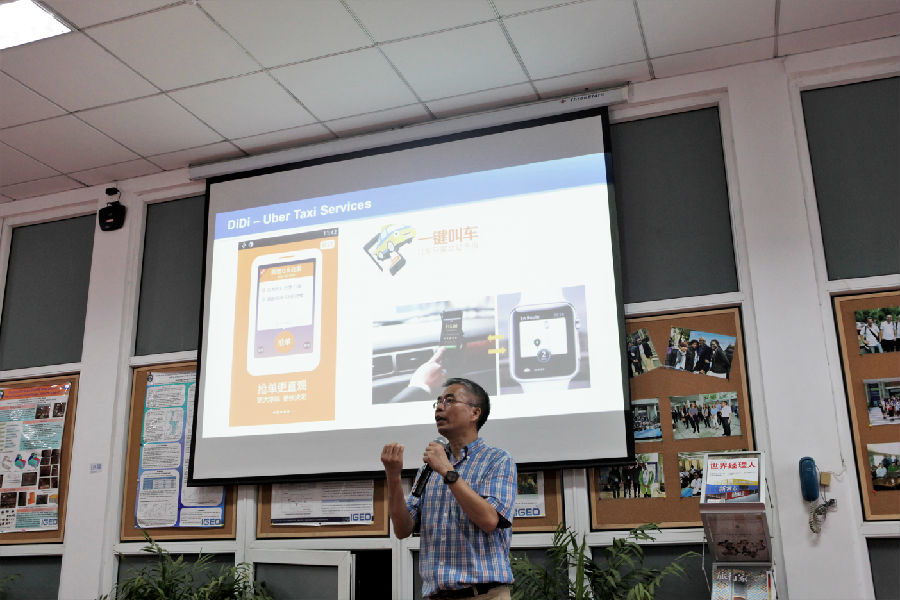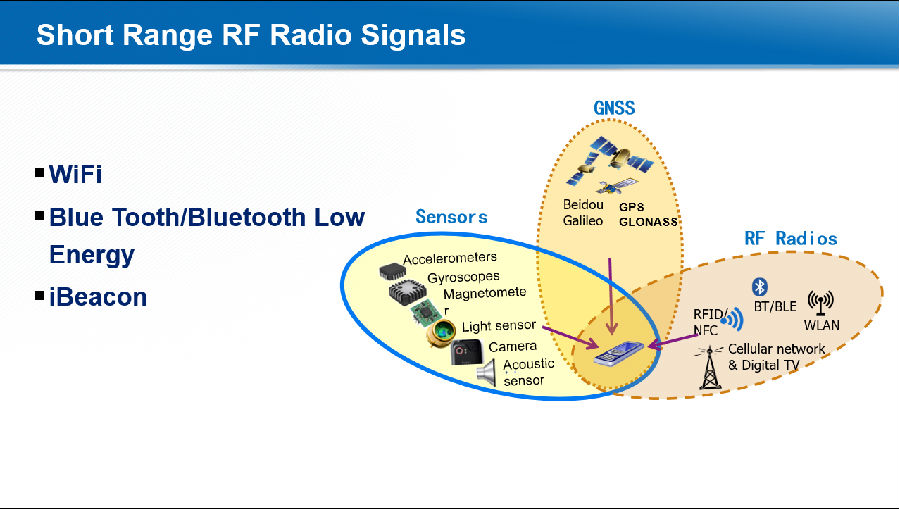Text: Karim Md Fazlul
Editor:李茹 (May)
Host:李茹 (May)
Photo:Karim Md Fazlul
Video: Hashir Rana
Organized by:周炜轩(Wesley Zhou)
>>> About the Speaker:
Ruizhi Chen is a Professor and Director of LIESMARS in Wuhan University and holds the following credentials: Expert of The Thousand Talent Program, Editor-In-Chief of the "Journal of Global Positioning Systems" and Associate Editor of the "The Journal of Navigation". His research interest includes: Global Navigation Satellite Systems, indoor positioning, and location-based services. He has also been selected twice to feature on the cover of the magazine "GPS World".
>>>About this English Geoscience Café session:
Session: No. 8
Venue:Leisure Hall on Forth Floor in LIESMARS, Information Sciences Campus of Wuhan University.
Time: 2:30 - 4:30pm
Date: 30th, June
Topic: High Precise Indoor Positioning and Location-Based Services
It all started with Sputnik. What seemed like a major defeat in the Cold War, turned out to be the catalyst for one of the most important technologies of the 20th century, and maybe even in the 21st. On October 4th, 1957, scientists at MIT noticed that the frequency of the radio signals transmitted by the small Russian satellite increases as it approaches and decreases as it moves away. This is caused by the Doppler Effect, the same thing that makes the timbre of a car horn change as the car rushes by. This gave the scientists a grand idea. Satellites could be tracked from the ground by measuring the frequency of the radio signals they emitted, and conversely, the locations of receivers on the ground could be tracked by their distance from the satellites. That, in a nutshell, is the conceptual foundation of modern GPS. That GPS receiver in your phone or on the dash of your car learns its location, rate of speed, and elevation by measuring the time it takes to receive radio signals from four or more satellites floating overhead.
Positioning in phone has come a long way. At the beginning of the lecture, Prof. Chen showed audience the intelligence of smart phone in telling people where they are. He made a live demonstration by asking his phone “where am I”, and the phone answered him “On Qiushi Road”. Prof. Chen pointed out that then, the phone can tell the location of its user because there is simple intelligence or artificial intelligence in your cell phone, which has kind of senses in coordinate location like longitude and latitude with the help of GPS database.

Fig 1. Prof. Chen is giving a lecture
Then Prof. Chen made a brief introduction to the long history of the positioning function in cell phones. The original function of cellphone is just communication, and nobody thought it possible to do positioning on phones at the beginning. In 1999, mobile phone manufacturer Benefon launched the first commercially-available GPS phone, a safety phone called Benefon Esc. The GSM phone was sold mainly in Europe but had no operation function like panning, they just use key functions. Another problem was, the map was black and white, and they didn’t have many maps to navigate until 2007 and 2008, when maps came into the cell phone. Then came Location-based services, which developed quickly and turned out to be a very big business . Professor mentioned that, location-based services come from navigation because all the cell phone have map functions like google map, Baidu map, Open Street Map etc. Indoor positioning is also very important, because people spend almost 80 percent of their time conducting indoor activities.

Fig 2. Audience are listening to the lecture sedulously
Afterwards, Prof. Chen moved his talk to the positioning sensors and RF radios in smartphone. Some basic observables like ranging and traveling distance, speed, acceleration, angels, angel rates, signal strength, cell-id and image feature, can be used for positioning. Then professor talked about RF radio, which is mainly used for communication. Bluetooth is used for connecting the device without cable, and Wi-Fi is for short range communication. Digital TV has a very strong transmitted power that can penetrate the wall of a building. GPS can not work indoor because its signal comes from 20,000 km high, and before it comes to the surface, it has passed the atmosphere, which decreases the signal strength greatly. In this case, we use Digital TV instead of GPS for indoor positioning.When a mobile phone is switched on, it makes control to a Base Transceiver Station (BTS) in its vicinity; In which case, all mobile phones are automatically located by the cellular networks. The position derived from the CID solution is the location of the centroid of the signal coverage area and this is the only method used in a cellular network like China mobile.

Fig 3. Multiple Location Methods and RF Radio Signals
Then professor gave a short prolog about some of the positioning observables like cell-ID, Time of arrival (ToA), Time Difference of Arrival (TDoA), Direction of arrival (DoA) and Radio Signal Strength Indicator (RSSI). Professor pointed out that fingerprinting is the most common approach for indoor positioning and Received Signal Strength Indicator (RSSI) is the most common observables (fingerprint). Fingerprinting works with 2-5 meters positioning accuracy for indoor activities, and the accuracy decreased rapidly to 20-40 meters when conducting activities outdoors.Both Bluetooth and Wi-Fi signal can be used for fingerprinting. However, Bluetooth is not as convenient as Wi-Fi because of its infrastructure. At the same time, despite the advantages of convenience and stronger signal, Wi-Fi is not as reliable as Bluetooth.
After that Prof. Chen moved his talk to the indoor positioning with built-in sensors. Professor pointed out that, there are lots of sensors inside a cell-phone, such as accelerometer, gyroscope, magnetometer, light scanner, camera and acoustic ranging positioning sensor. Barometer is another type of sensor that is very important for the measurement of detection flow. Whenever we open our cell-phones, there will always been two measurements available in our phones : one is magnetic measurement, the other is sensor measurement.
Then professor talked about the Pedestrian Dead Reckoning (PDR). The goal of PDR project was to track the position of a human subject in real time. PDR system uses IMU which includes a three-axis gyroscope, a three-axis accelerometer, and a three-axis magnetometer. PDR functionalities depend on three steps: step detection, step length estimation and heading change estimation.
After finishing the first session that focused on positioning, Prof. Chen introduced location-based services to the audience. Navigation is now a standard application in all smart phones. Smart Phone positioning is playing a more and more important role in our daily lives, and will become one of the core technologies in the fields of artificial intelligence and future super intelligence. So far, people have benefited a lot with Location Based Services provided in their smartphones, such as Car Navigation, Didi-Uber Taxi Services, Smart Parking, Personal Navigation, Children and Elder Safety, heat map of people flow, Precision Marketing, VR-Sport Broadcast , MR Games and so on.

Fig 4. Location Based Services
At the end of the lecture, Prof. Chen left a profound question to the audience, “Can a mobile device think? Can my phone understand what am I doing now and served me better?” And he showed part of his ongoing research result about pushing intelligence to cellphones in the form of classified models (contextual thinking engine), and the phone itself showed the capability to infer human significant activities to some extent.

Fig 5. The Group picture of EGSC members and Prof. Chen
Scan the QR code below and join us!
